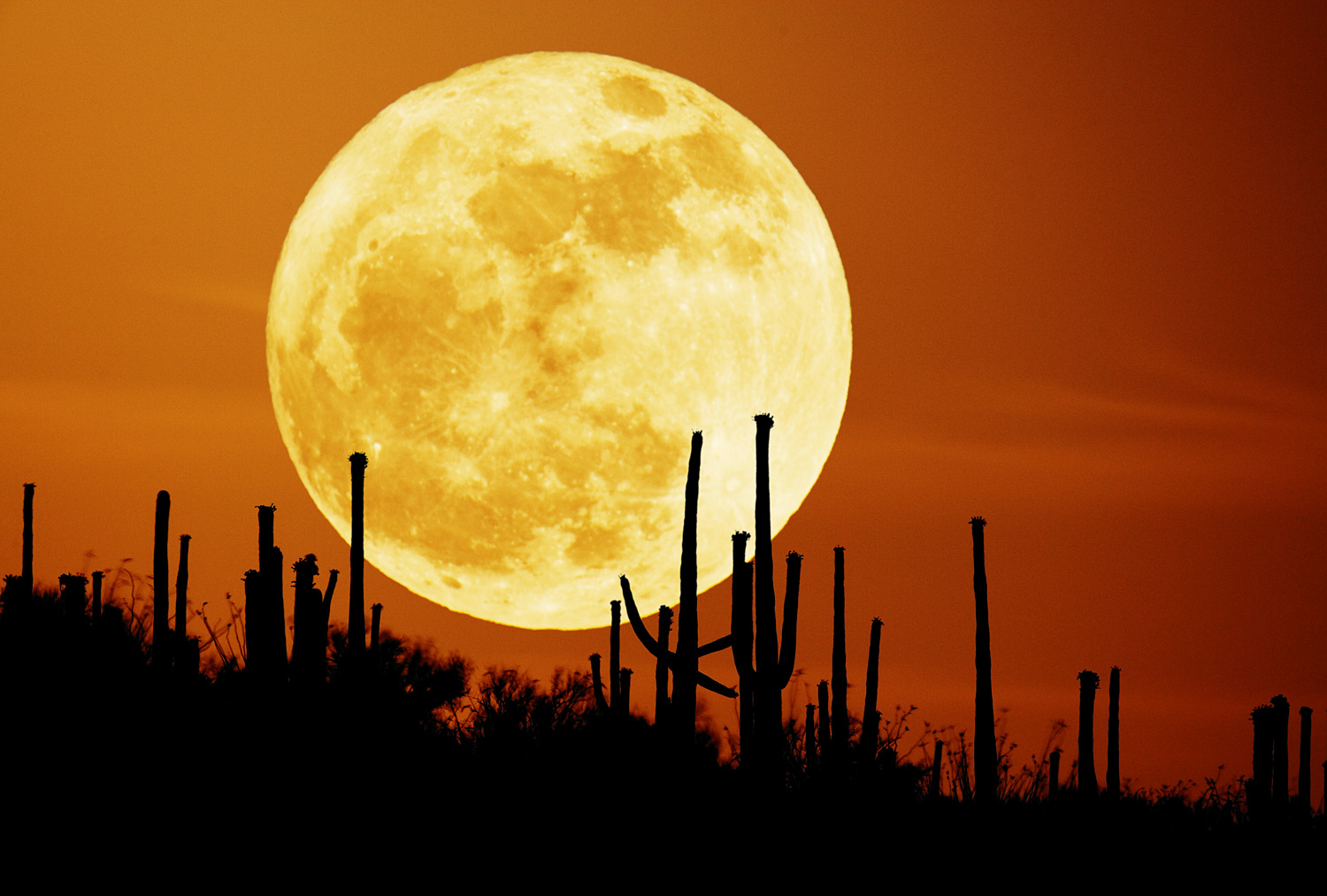 I think this picture of the full moon is just beautiful. This full moon before the autumnal equinox in commonly called the Harvest Moon. It is named the Harvest Monn because it is said that farmers would work into the night harvesting by moonlight. The ecliptic is making a very narrow angle with the horizon causing the moon to "rise" unusually fast. It is a relatively short time from sunset to the moonrising; therefore, there is not a long period of darkness.
I think this picture of the full moon is just beautiful. This full moon before the autumnal equinox in commonly called the Harvest Moon. It is named the Harvest Monn because it is said that farmers would work into the night harvesting by moonlight. The ecliptic is making a very narrow angle with the horizon causing the moon to "rise" unusually fast. It is a relatively short time from sunset to the moonrising; therefore, there is not a long period of darkness.
Friday, September 28, 2007
1.5:NASA APOD - Saguaro Moon
 I think this picture of the full moon is just beautiful. This full moon before the autumnal equinox in commonly called the Harvest Moon. It is named the Harvest Monn because it is said that farmers would work into the night harvesting by moonlight. The ecliptic is making a very narrow angle with the horizon causing the moon to "rise" unusually fast. It is a relatively short time from sunset to the moonrising; therefore, there is not a long period of darkness.
I think this picture of the full moon is just beautiful. This full moon before the autumnal equinox in commonly called the Harvest Moon. It is named the Harvest Monn because it is said that farmers would work into the night harvesting by moonlight. The ecliptic is making a very narrow angle with the horizon causing the moon to "rise" unusually fast. It is a relatively short time from sunset to the moonrising; therefore, there is not a long period of darkness.
Friday, September 21, 2007
1.4 - NASA Picture of the Day
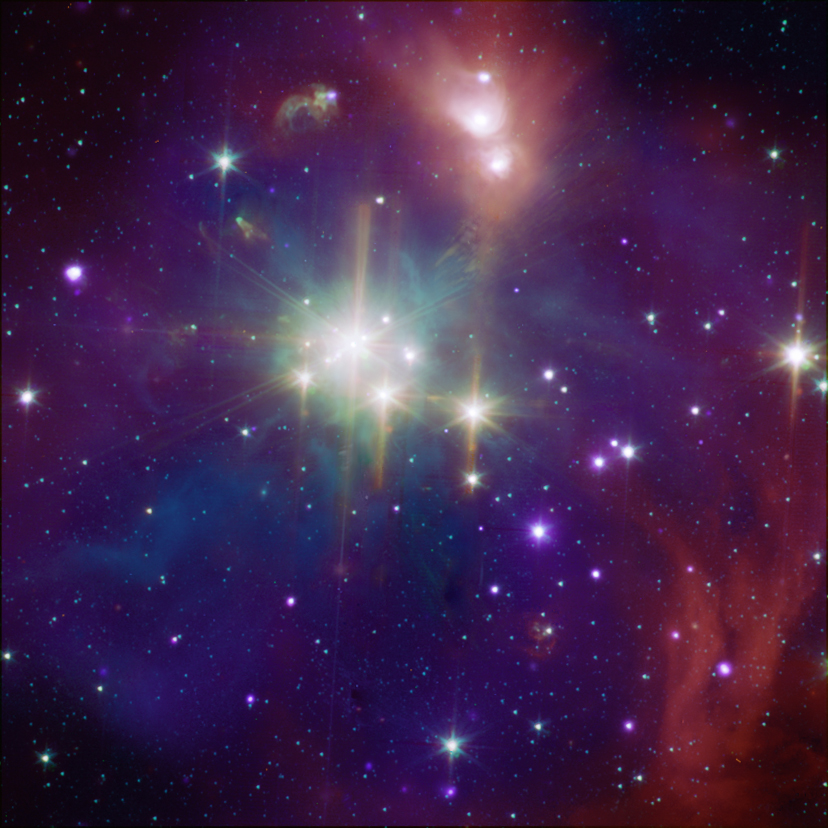 This is a picture of the Coronet Cluster in Corona Australis and is 420 light-years away. X-rays and infrared from the stars were combined to form this picture. The cluster contains a couple dozen young stars that are at different stages of development. The cluster is one of the closest and most active star forming regions. The wavelength view spans two light-years and was made by the Chandra Observatory and the Spitzer Space Telescope.
This is a picture of the Coronet Cluster in Corona Australis and is 420 light-years away. X-rays and infrared from the stars were combined to form this picture. The cluster contains a couple dozen young stars that are at different stages of development. The cluster is one of the closest and most active star forming regions. The wavelength view spans two light-years and was made by the Chandra Observatory and the Spitzer Space Telescope.
Friday, September 14, 2007
1.3 - NASA Picture of the Day September 12: Six Rainbows Across Norway
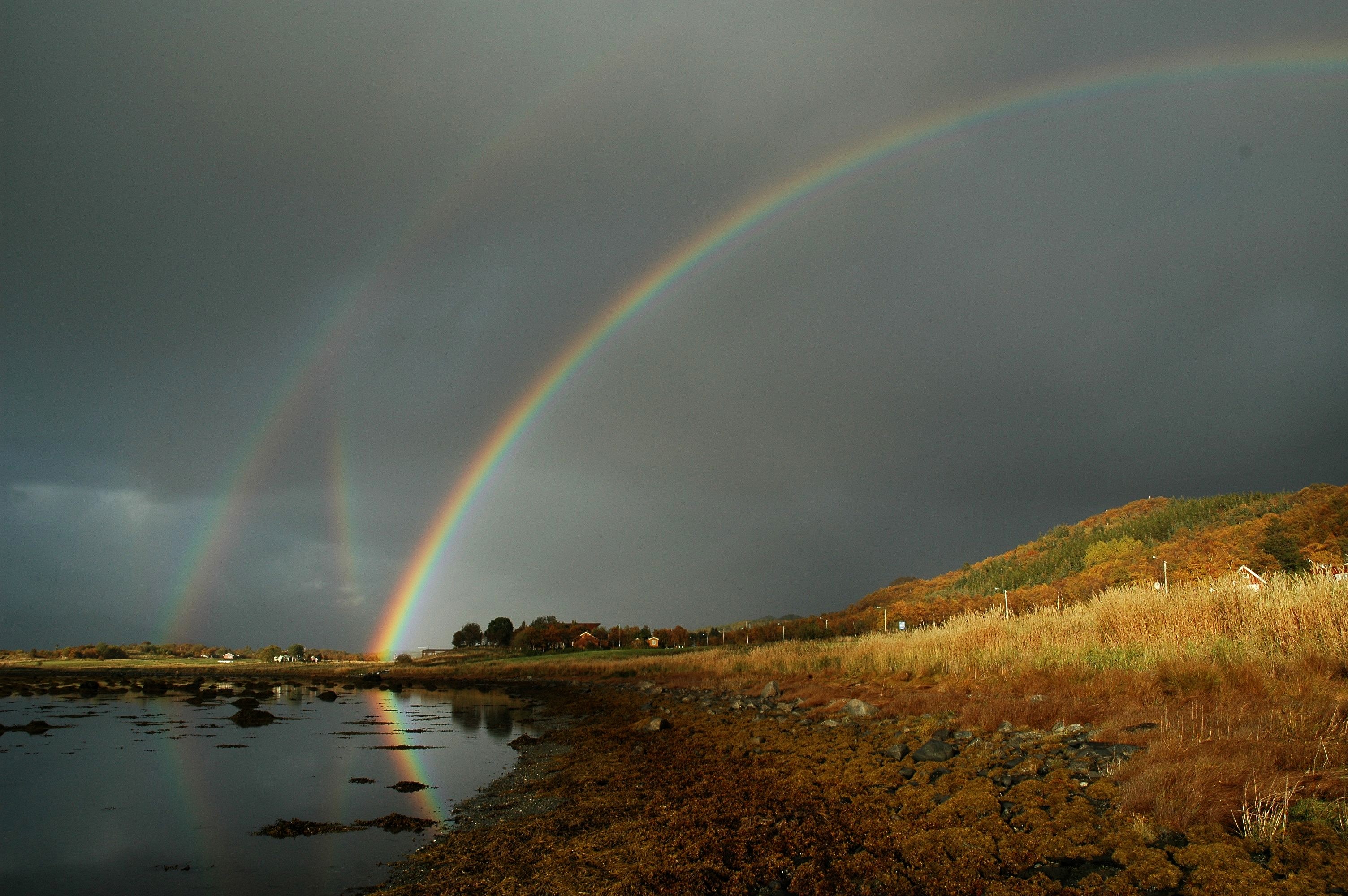
Although rainbows are often associated with magic and pots of gold, they are actually caused by refraction and reflection. Sometimes a second rainbow is formed with reversed colors (far left). This is caused because there are multiple reflections inside the water droplets. A third rainbow is also formed since light reflected from the lake is also reflected inside the water droplets. Those Norwegians are so lucky to see so many rainbows at once!
Sunday, September 9, 2007
NASA Picture of the Day September 2: South Pole Lunar Eclipse
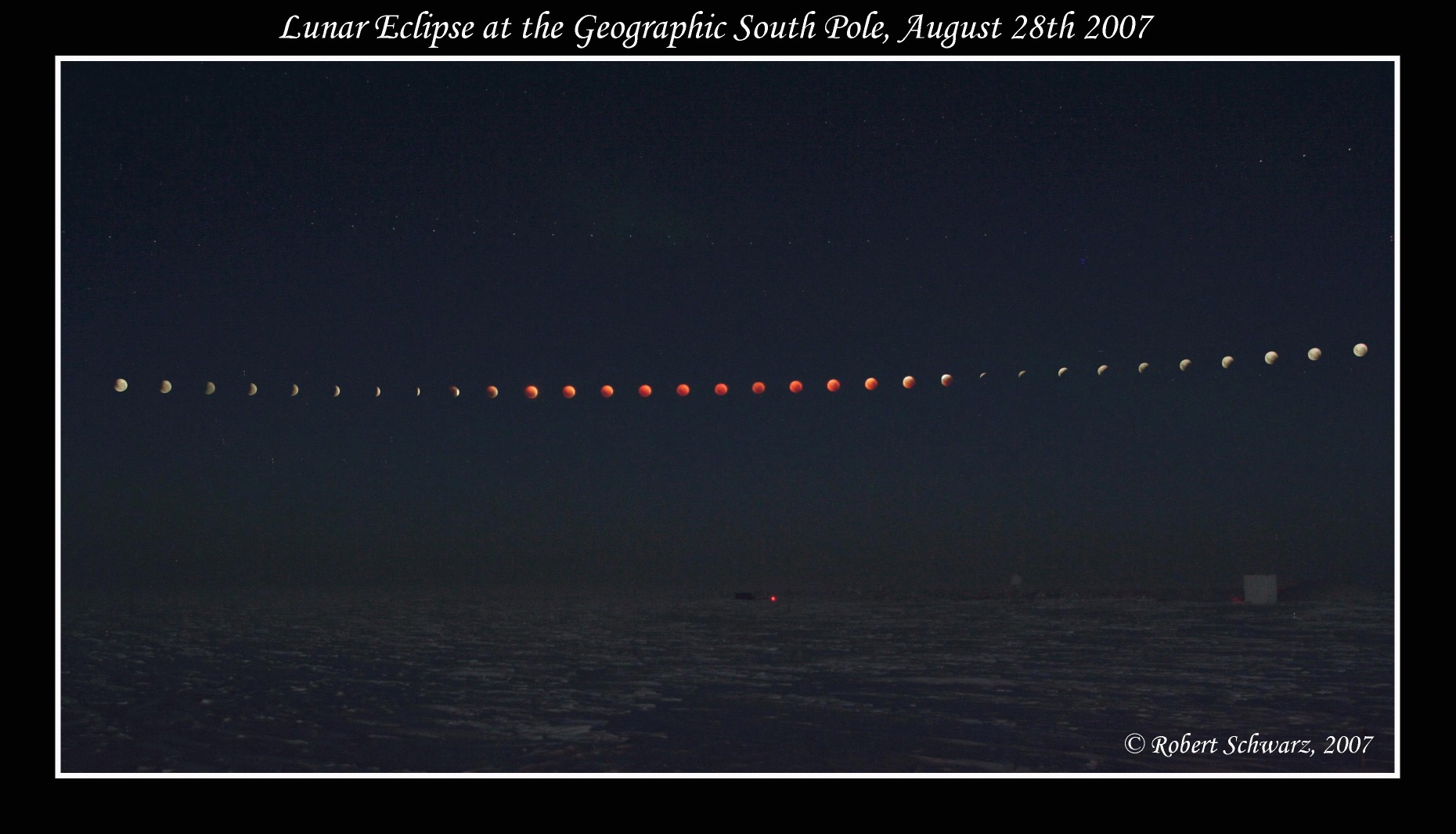 It is just crazy to think that the moon can be continuously up for 14 days at the South Pole. Since the moon never set, it just kept moving in a continuous line across the sky. It's a little creepy seeing the moon turn red along the eclipse sequence. Props to the photographer for getting such a good picture in -90 F weather. There is a little blurring from the atmosphere, but it is still a fabulous picture!
It is just crazy to think that the moon can be continuously up for 14 days at the South Pole. Since the moon never set, it just kept moving in a continuous line across the sky. It's a little creepy seeing the moon turn red along the eclipse sequence. Props to the photographer for getting such a good picture in -90 F weather. There is a little blurring from the atmosphere, but it is still a fabulous picture!
Monday, September 3, 2007
NASA Picture of the Day August 22: Tentacles of the Tarantula Nebula
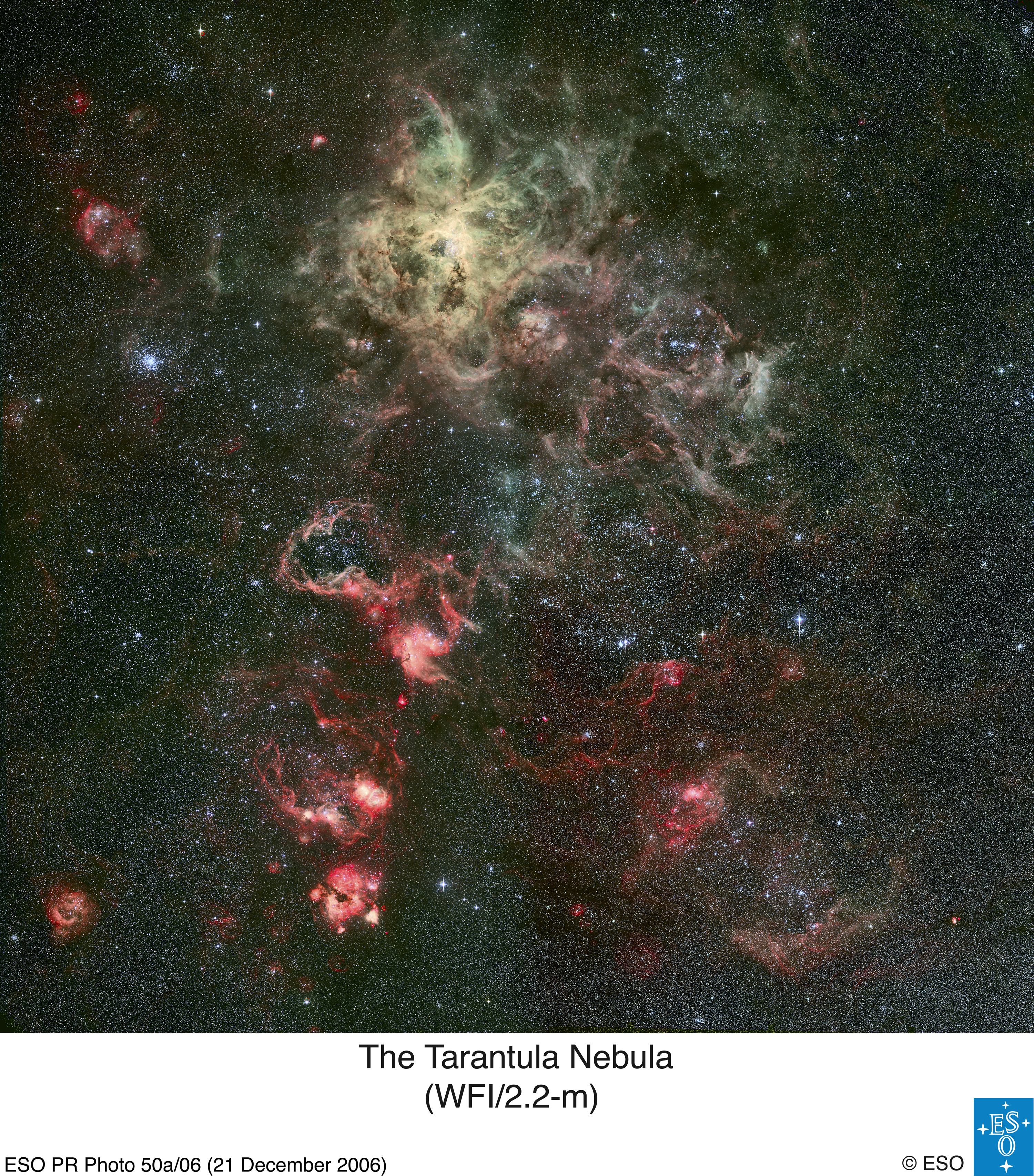
It is just incredible that we can see this nebula that is actually in another galaxy! The Tarantula Nebula is located in the Large Magellanic Cloud, also known as 30 Doadus. It is the most violent star forming area in the Local Group. It also contains the star cluster R136 which contains some of the biggest and hottest known stars.
Subscribe to:
Posts (Atom)